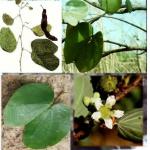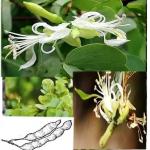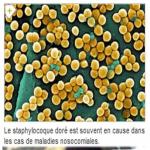
Natural remedy for blood cancer leukemia
- By narso10
- On 2025-07-04
- 0 comments
Natural remedy for blood cancer leukemia . In recent years, blood-related cancers have become a significant concern in global healthcare. Among these, leukemia stands out not only for its complexity but also for its life-threatening nature. Consequently, it is crucial to fully grasp what leukemia is, how it develops, what signs it presents, and how it can be effectively treated. In order to shed light on this serious disease, this article will explore its causes, types, symptoms, diagnosis methods, and available treatments. Additionally, it will discuss possible preventive measures and the promising advancements in medical research.
Natural remedy for leukemia. Please write to obtain our natural solution.
002290160081765
Understanding Leukemia: Causes, Symptoms, Diagnosis, and Treatments
What Is Leukemia?
To begin with, it is essential to understand the meaning of leukemia. Leukemia is a type of cancer that affects the blood and bone marrow, characterized by the excessive and uncontrolled production of abnormal white blood cells. These abnormal cells, over time, crowd out the healthy blood cells, thereby impairing the body’s ability to fight infections, transport oxygen, and stop bleeding.
Furthermore, it is important to note that leukemia is not a single disease but rather a group of related blood cancers, each with its own progression speed and prognosis. Therefore, it becomes necessary to distinguish between the different types of leukemia in order to better appreciate their unique features.
Types of Leukemia
Leukemia can be classified based on the speed of progression and the type of blood cells affected. In terms of progression, leukemia can be either acute, which develops rapidly and requires immediate treatment, or chronic, which progresses slowly and might remain undetected for years. Moreover, depending on the specific white blood cells it targets, leukemia is further divided into lymphocytic or myelogenous types.
Consequently, there are four main categories:
Acute Lymphocytic Leukemia (ALL)
Acute Myelogenous Leukemia (AML)
Chronic Lymphocytic Leukemia (CLL)
Chronic Myelogenous Leukemia (CML)
Each of these types differs not only in progression and symptoms but also in how it responds to treatment. As a result, identifying the precise type of leukemia is a crucial first step in managing the disease effectively.
Causes and Risk Factors
Turning now to the possible causes of leukemia, it is important to mention that, to this day, the exact origins of most leukemias remain unknown. However, extensive research has revealed several risk factors associated with a higher likelihood of developing the disease.
First and foremost, genetic predispositions play a significant role. For instance, individuals with certain genetic disorders, such as Down syndrome, are more likely to develop leukemia. In addition, environmental factors like exposure to high doses of radiation or prolonged contact with chemicals such as benzene have been linked to increased leukemia risks.
Furthermore, previous cancer treatments involving chemotherapy or radiotherapy can heighten the probability of developing secondary leukemia. Moreover, family history also contributes, as individuals with close relatives diagnosed with leukemia may face a slightly elevated risk themselves.
Therefore, while the precise triggers remain somewhat mysterious, it is clear that both genetic and environmental factors intertwine to influence leukemia’s development.
Symptoms and Clinical Manifestations
Having discussed the causes, it is equally important to examine the symptoms associated with leukemia. Interestingly, in its early stages, leukemia often produces mild and non-specific symptoms that can be easily mistaken for those of common illnesses like the flu.
Nonetheless, as the disease progresses, several warning signs typically emerge. Chief among them is persistent fatigue, which results from the body’s inability to produce sufficient healthy red blood cells. Additionally, frequent infections may occur because of the shortage of functional white blood cells. Alongside these, unexplained fever, weight loss, and night sweats are common.
Moreover, patients may notice easy bruising, bleeding gums, or frequent nosebleeds, owing to reduced platelet counts. In some cases, swollen lymph nodes, especially in the neck, armpits, or groin, might become apparent. Furthermore, bone pain or discomfort in the joints is often reported, particularly in cases of acute leukemia.
Consequently, it becomes evident that while the symptoms are varied, their persistence should prompt immediate medical attention.
Diagnostic Procedures
Once symptoms suggest leukemia, prompt and accurate diagnosis becomes essential. Typically, the process begins with a complete blood count (CBC), which often reveals abnormal levels of white blood cells, red blood cells, and platelets.
However, to confirm the diagnosis, a bone marrow biopsy is usually required. This involves extracting a small sample of bone marrow, usually from the hipbone, to check for leukemia cells under a microscope. Additionally, immunophenotyping and cytogenetic analysis can be performed to determine the specific type of leukemia and detect chromosomal abnormalities.
Moreover, imaging tests such as X-rays, CT scans, or MRIs may be used to assess whether the cancer has spread to other parts of the body. Altogether, these diagnostic procedures not only confirm the presence of leukemia but also guide physicians in selecting the most appropriate treatment plan.
Available Treatment Options
Following a confirmed diagnosis, the next critical step is choosing the most effective treatment. It is worth noting that leukemia treatment depends on several factors, including the type and stage of leukemia, the patient’s age, and their overall health condition.
Primarily, chemotherapy remains the most commonly used treatment. It involves using powerful drugs to destroy leukemia cells, either administered orally or through injections. Additionally, radiation therapy might be recommended, particularly when leukemia cells have accumulated in specific parts of the body.
In recent years, targeted therapy has emerged as a promising alternative, focusing on specific genetic mutations within leukemia cells. For example, tyrosine kinase inhibitors (TKIs) have shown remarkable success in treating chronic myelogenous leukemia.
Moreover, for certain patients, a bone marrow transplant or stem cell transplantation offers the potential for a cure, especially when other treatments have failed. This procedure involves replacing the patient’s diseased bone marrow with healthy marrow from a compatible donor.
Complementarily, immunotherapy has gained traction, leveraging the body’s immune system to recognize and attack leukemia cells. Altogether, these diverse treatment options have significantly improved survival rates and quality of life for leukemia patients.
Prevention and Future Prospects
Although no guaranteed method exists to prevent leukemia, certain precautionary measures can reduce one’s risk. Avoiding prolonged exposure to harmful chemicals, practicing radiation safety, and adopting a healthy lifestyle are all advisable.
Simultaneously, medical research continues to advance at an impressive pace. Notably, gene therapy, CAR-T cell therapy, and other innovative approaches hold promise for more effective, personalized treatments. Therefore, while leukemia remains a formidable disease, future prospects appear increasingly hopeful.
Conclusion
In conclusion, leukemia is a complex and potentially life-threatening cancer of the blood and bone marrow. Nevertheless, understanding its types, causes, symptoms, and treatments can empower individuals and healthcare providers alike to respond swiftly and effectively. Thanks to ongoing medical research, novel therapies are continually being developed, offering hope where there was once despair. Therefore, increased awareness, timely diagnosis, and comprehensive care remain pivotal in the fight against leukemia.
Would you like a version focused on natural and complementary remedies for leukemia, or perhaps a shorter summary article as well? I can prepare one if you’d like.
Natural remedy for leukemia. Please write to obtain our natural solution.
002290160081765
Add a comment








